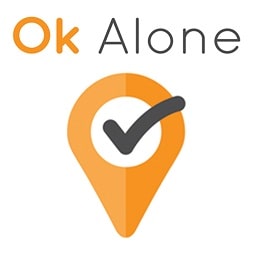Human resource professionals play a vital role in ensuring the health and safety of lone workers. Of course it’s not their exclusive domain (health and safety is everyone’s business), but they are equipped with exceptional communication skills that can help mitigate the risks associated with working alone.
It’s not easy to start a conversation about safety, but it’s one that needs to happen on a regular basis. Why? Beyond compliance, safety is an investment in the business. In safe and supportive work environments, there is an increase in:
- Employer and employee morale
- Retention of talented employees
- Productivity
- Quality of service
And, a decrease in:
- Costs associated with injuries and illnesses
Here are a few ways to ease into the topic of lone worker safety:
Utilize all possible resources
OHS guidelines, safety committees, training seminars—these are all essential resources that can enhance the safety culture of any workplace. But for lone workers, who are far removed from other employees, one of the best ways to spark conversation is through the safety technology itself.
An employee uses a lone worker app throughout their entire shift. It’s a real, tangible lifeline and a connection to the “outside world” in case an emergency happens. But it’s more than that. This important piece of technology is also a reassuring symbol for people that their employer values their health and safety just as much as other workers. And, it can also act as a jumping off point for a more in-depth discussion about safety responsibilities. For example, activity charts, which are based around objective measures and behaviours, can be used in performance reviews to discuss safety behaviours.
Keep an open line of communication
Because lone workers are away from others, they may feel disconnected from their company, its culture, and its core staff. That’s why it’s so important for the HR department to maintain open and ongoing communication with their remote employees. This special class of worker should feel extra comfortable talking about their work environment and reporting unsafe practices and conditions. So, don’t be afraid to touch base often, give regular feedback, hold frequent meetings, ask questions, and be a mediator between management and workers where necessary.
Coordinate with other departments
Most HR staff members don’t know the technical aspects of workplace health and safety (nor should they have to), but what they do know is the workplace, the employees, and the unique risks associated with various roles. With this knowledge, the HR department can help align the safety goals of various departments. The result will be a successful, company-wide safety plan that addresses the practical concerns of not just lone workers, but all workers company-wide.
Looking for more ways to improve lone worker safety in your workplace? Then head over to our blog for helpful tips, advice, and insights.

The Ok Alone team writes informative articles about lone working. Through our articles, we aim to educate readers on the benefits and best practices of using our lone worker app, and how Ok Alone can help mitigate risks and enhance communication between workers and monitors. Learn about other areas including legislation, risk management, and legal compliance plus lone worker features such as man down, high-risk check ins and location monitoring.

